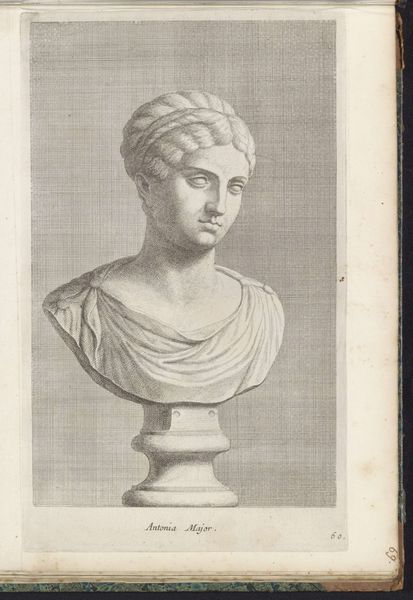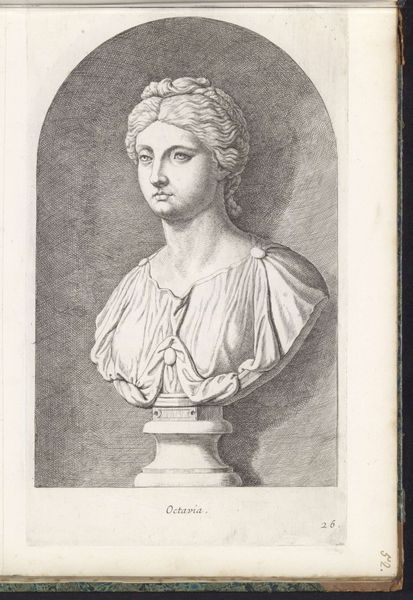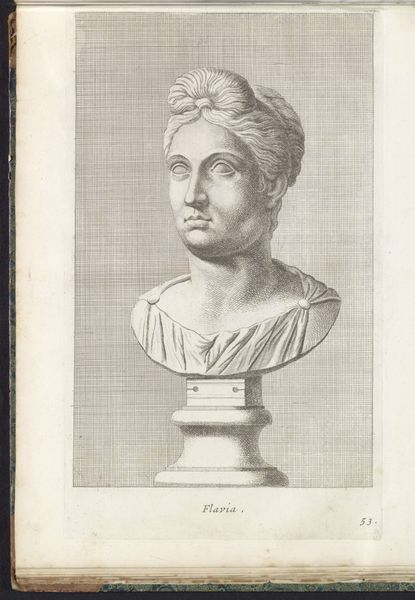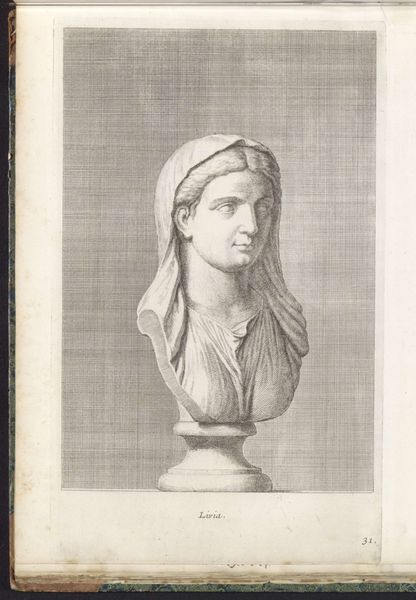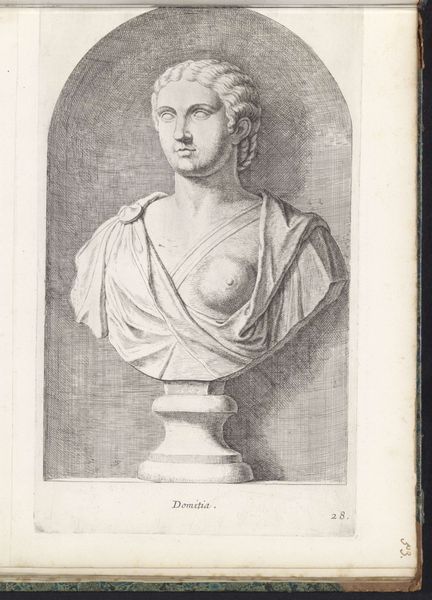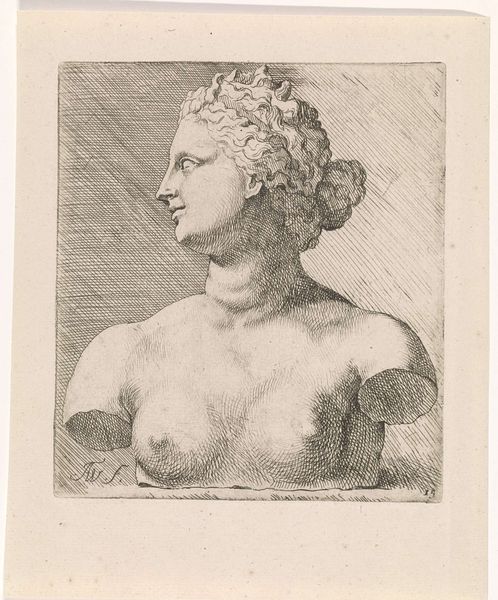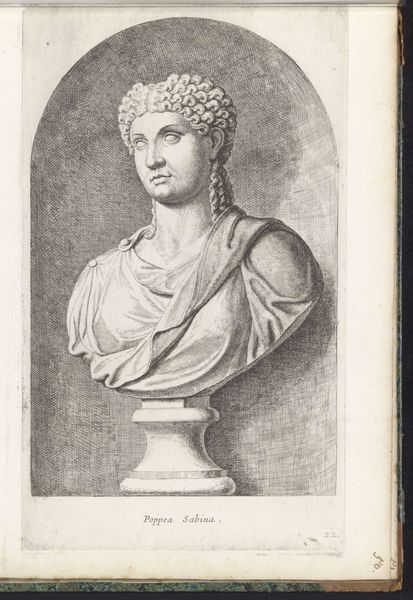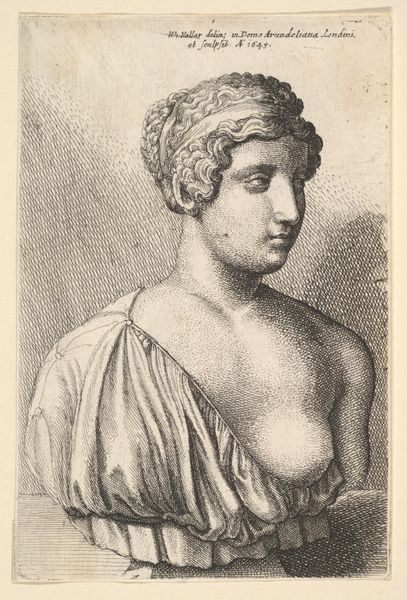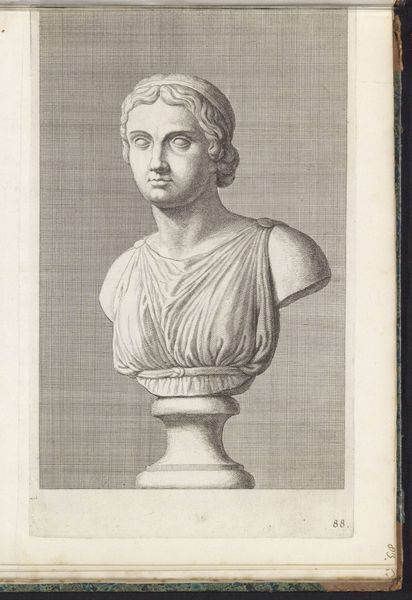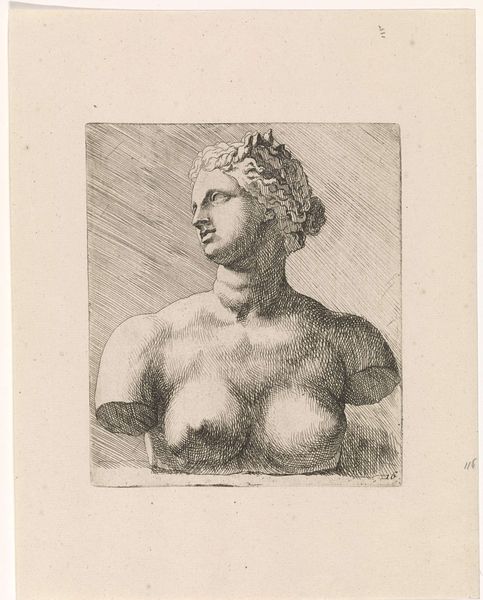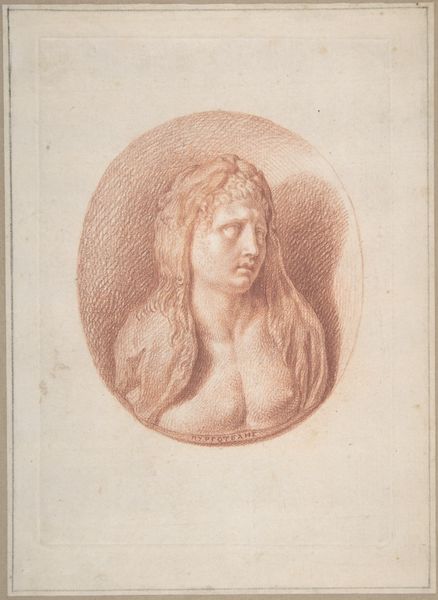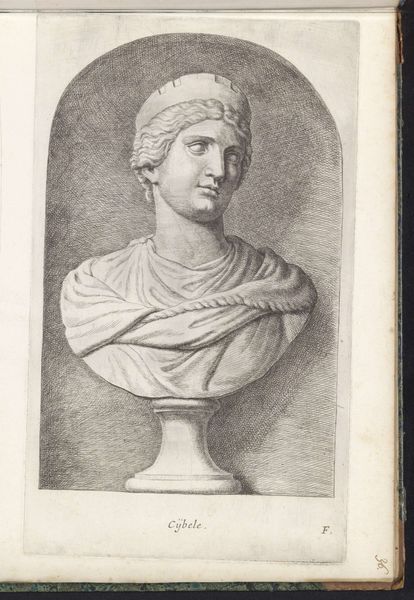
drawing, print, engraving
#
portrait
#
drawing
#
baroque
# print
#
pencil sketch
#
figuration
#
form
#
pencil drawing
#
line
#
portrait drawing
#
history-painting
#
nude
#
engraving
Dimensions: height 328 mm, width 196 mm
Copyright: Rijks Museum: Open Domain
Editor: We're looking at "Bust of a Woman with a Crown" by Hubert Quellinus, created sometime between 1646 and 1670. It's a drawing, almost like an engraving, held at the Rijksmuseum. The figure is very formal, almost austere. What formal elements strike you most prominently? Curator: The line work, certainly. Notice the economy of means with which Quellinus renders the texture and form. Consider, for instance, the variations in hatching which denote both the fall of light and the perceived density of the material itself. Observe the implied geometry—how do the curves of the crown and hair play against the implied circular form of the niche? Editor: I hadn’t considered the implied geometry of the background before. Does that choice relate to other features, such as the symmetry of the bust itself? Curator: Indeed. Symmetry is not merely a presentational feature, but a crucial aspect of the piece's structural integrity. Consider how the very slight tilt of the head, a barely perceptible asymmetry, serves to animate the otherwise rigid formalism. How do you see this play of symmetry and asymmetry influencing your perception of the artwork? Editor: That delicate balance really brings the figure to life! The control of the line and the nuanced variations create something unexpectedly captivating. Thank you. Curator: And thank you for bringing fresh eyes to this interplay of form and line; it's these observations that keep the conversation around art vibrant and insightful.
Comments
No comments
Be the first to comment and join the conversation on the ultimate creative platform.
